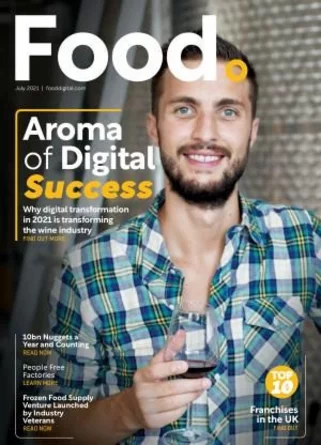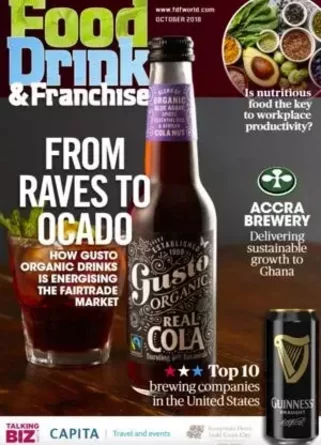Port Brewing and the Lost Abbey Divide and Conquer

If it feels like you can’t turn a corner without hitting a new craft brewery, that’s not all in your head: the craft brewing industry grew 18 percent in volume and 20 percent in revenue in 2013 alone, achieving 14.3 percent of the beer industry’s dollar market share. With so much growth, it should come as no surprise that some have started to wonder when the market will become oversaturated and that growth will start to slow down. But that doesn’t have to be the conversation.
With two decades in the brewing business, spinning a head brewer position at once-fledgling Pizza Port Solana Beach into an owner partnership of the duel brands Port Brewing and The Lost Abbey, it’s fair to say that Tomme Arthur is an elder statesman of the craft brewing scene. According to Arthur, there is still a lot of room for growth in the brewing industry—the key is in being creative, standing out, and learning from other industries outside your own.
What the Wine and Spirits Industries Can Teach Beer About Labeling and Branding
I certainly think that if you’re going to be in this business, which is an alcohol-based business, you should look at all alcohol,” says Arthur. “You should understand how the bourbon people operate and you should understand how the tequila people operate, because everybody is essentially trying to draw from the same pool of people—that is, people who consume alcohol. That’s a finite amount of people. So I do think it’s important to pay attention to not only what our fellow brewers are doing, but what’s been the history in the wine business and what spirit looks like.”
That philosophy has helped to shape what is perhaps the most unique thing about Port Brewing and The Lost Abbey is right in its name: it’s a division of two different labels, with Port Brewing representing the more American-style quirky beers and The Lost Abbey representing Belgian style brews. According to Arthur, this division was born from both an interest in Belgian brewing techniques and an observation of the wine industry.
“There are a lot of wineries out there that have multiple labels—we would call them ‘brands’ in the beer business, in the winery business you call them ‘labels’—and the labels do different things and have different price points, different branding, different marketing, and different positioning,” explains Arthur. “What that allows a winery to do is have ranges of products and scarcity and complete availability. If you have a winery with three labels, you might have a very high-end cabernet label with reserve and stuff you have to really go to the winery to get, you might have a mid-tier with a higher-end $30 bottle, and then you might have something in the $5-10 range. But all of them work together to generate sales—you get the cache from the top, and convertibility in the middle, and there’s room to grow.”
While the concept of two brands housed within one brewery was rare when Port Brewing first came onto the scene, Arthur notes that it may be catching on. “I think we’re starting to see a lot more people wanting to do that these days, seeing the success we’ve had and other breweries needing a brand or a line extension or a whole new brand to get their foot in the door,” he says. “When Frank [Green, sales representative] runs out there, he’s got more beers in his back pocket than most brewery sales reps because of the range that we produce.”
RELATED CONTENT:
- US Brewing Industry Reaches Milestone with 3,040 Breweries in Operation
- Green Flash Brewing Co Acquires Alpine Beer Company
- [INFOGRAPHIC] 5 Insights and More About the Beer and Wine Industries
Reaching Out Directly To Your Consumers
“One thing I took away from the wine business was that there’s a lot of direct to consumer sales,” says Arthur. That concept of selling bottles directly to consumers, cutting out the retail middle man, is a key feature of the wine industry – and it’s become an integral part of Port Brewing and The Lost Abbey as well, with the brand releasing several ultra-small batch specialty beers to the public every year.
“We’ve always had a very simple understanding of our sour beer, and that is that we can’t make big batches of these things and sell predictably to distributors because they’re unique – each batch of sour beer is dependent upon the blend, and on us going in and determining how much great beer we have to use – so a lot of our limited releases have been about not blending to volume, but blending to flavor,” says Arthur. “In the case of Veritas 013, we just released less than 200 cases. We never dumb down the flavor or really work toward that specific case total, we always work toward: how much do we have that’s great, fits the profile, and what do we do with that amount of liquid?”
Where the rarity of such limited releases could cause problems with pricing and availability on the retail side, selling directly to the consumer via online sales attempts to level the playing field for all Port Brewing fans. “In the case of things like Veritas and the Cable Cars and Duck Duck, sometimes not having enough beer to sell into the territory causes more problems, because now you’ve got retailers taking a giant amount of premium – so one of the reasons we do direct-to-consumer sales is to control that,” says Arthur. “When we say it’s $40 a bottle, it’s $40 a bottle to everybody. It’s not $40 because I’ve been buying from your store, then I go down the street and he’s charging $65, and another guy’s doing $80. It’s like buying concert tickets. You may not get the ticket to the concert this time, but you had the same shot as everybody else.”
Working Within a Changing Market
With a grand opening anniversary of May 5, 2006, Port Brewing and the Lost Abbey are now well into their eighth year. A lot has changed in that better part of a decade, and the brewery understands that change and cycles are part of the business – in order to thrive, you must understand that and keep up.
“The whole industry has really shifted its focus in the last few years to what they’re calling the ‘SKUmageddon,’ which is all the different beers hitting shelves all at the same time and retailers being very overwhelmed by all these different things, while their consumer base is not buying brand loyalty anymore whatever’s new and hip,” says Arthur. There’s a lot of: ‘I used to buy Stone IPA all the time, but now there are 15 other IPAs that I rotate through,’ they don’t want to miss out on something. So the pressure on us to be creative and inventive is really challenging, because a lot of brands were built on getting core predictability, having the same beers year after year that the consumer can expect, but right now they don’t seem to give a damn.”
This shift in consumer interests has created new challenges for both large and small-scale brewers. “For us it’s been a challenge with two labels in trying to not be too inventive and have too many new things, because at some point if that shift comes all the way back around to things that are predictable and core-driven and all of a sudden they don’t care about wacky things anymore, you’re not going to have any stable beer sales,” says Arthur. “So our hope right now is to continue making a core set of beers on both sides, drive or push on them to make sure that they’re getting out there, so that if the consumer comes back around and says ‘wow, I haven’t had a Devotion in a while, that’s a pretty darn good beer,’ it’s still a good price and it’s still available more widely than three liquor stores in town because it’s got placement and the ability to be picked up.”
- Top 10 biggest beer brewers worldwideDrink
- Coca-Cola Amatil strengthens beer and cider ambitions with 28-year Rekorderlig dealDrink
- Carlsberg beats third-quarter estimates with 'strong growth' in India and ChinaDrink
- Heineken confirms full year outlook after beer sales rise in every region in third-quarterDrink



